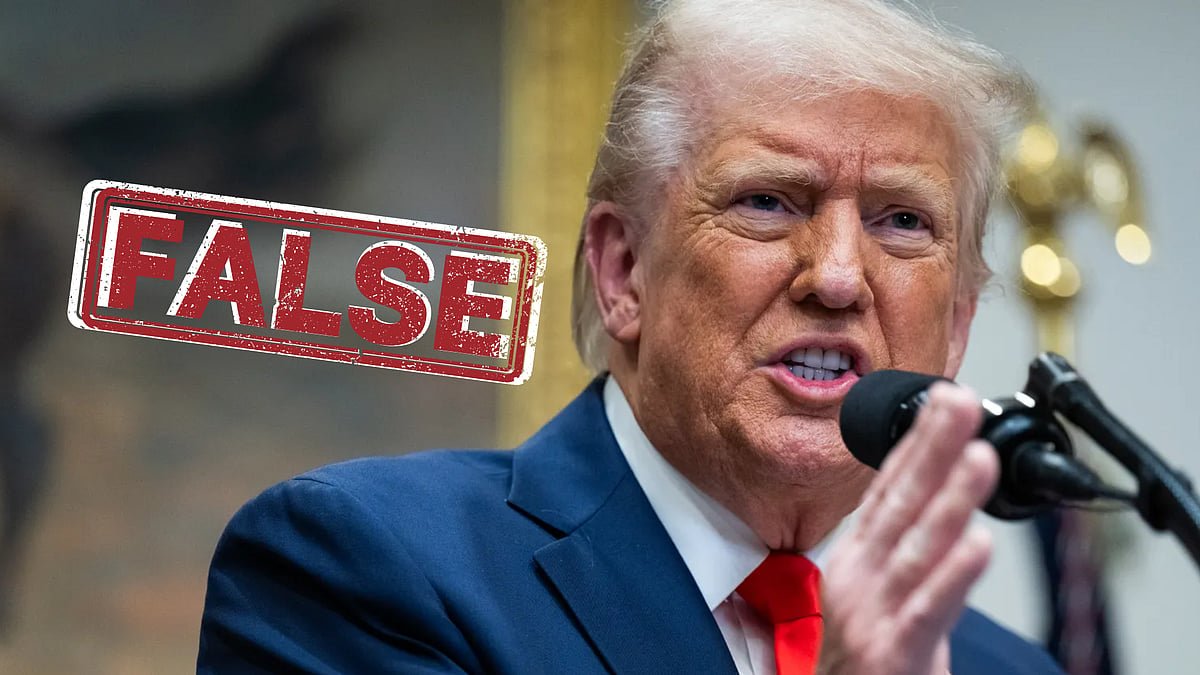Dealing with President Donald Trump is not just another test of diplomacy; it is a test of stategic composure, patience, and foresight. For India, navigating this new phase of US policy has meant balancing the promise of partnership with the pressure of unpredictability. The familiar logic of stable alliances and predictable outcomes has been replaced by deal-making on the fly, tariffs as bargaining chips, and the constant intrusion of domestic politics into international relationships.
The United States remains a crucial partner for India — a source of investment, technology, and strategic support in an uncertain Indo-Pacific. Yet, the Trump presidency has changed the rules of engagement. Every negotiation now feels transactional; every handshake is followed by a demand. The tariffs imposed by Washington in mid-2025 illustrate this new reality. Starting with so-called “reciprocal duties”, the US quickly escalated to punitive tariffs of up to 50 per cent on selected Indian exports, citing India’s continued purchase of Russian oil. The move hit sectors like textiles, gems, leather, and marine products — industries that sustain millions of livelihoods.
The tariff regime is not just an economic problem. It represents a shift in how the world’s most powerful country views partnerships. Allies are useful only as long as they deliver tangible, immediate returns. Strategic partnerships that once relied on long-term trust and shared values are now being tested on a regular basis. India, despite its growing economic weight and strategic relevance, finds itself treated less as a partner and more as a target for leverage.
r
There are reports that a new trade deal is being negotiated, which could bring the tariff rates down to around 15 or 16 per cent. But these reductions are conditional — linked to India scaling back its energy ties with Russia and granting greater market access to US agriculture. This linkage between trade and geopolitics reveals a relentless pursuit of short-term advantage, even at the cost of alienating friends.
This difficult phase has led to some speculation that India has been pushed to the margins of American strategic thinking. Certainly, Trump’s worldview appears dominated by China, Russia, and domestic revivalism, leaving little space for nuanced partnerships. But that interpretation is only partly true. The structural value of the US–India relationship remains intact. American businesses still see India as an indispensable market and supply-chain partner. The US security establishment still recognises India’s role in the Indo-Pacific. What has changed is not the importance of India, but the style of American leadership. It is all the more necessary that India adapt its approach without abandoning its principles.
That adaptation begins with clarity. India must define, with precision, what it can and cannot concede. Strategic autonomy, energy security, and domestic manufacturing capacity are non-negotiable. At the same time, India must be pragmatic enough to identify areas of compromise that deliver measurable benefits — whether in technology transfer, investment, or market access. Clear articulation of interests provides leverage; ambiguity invites coercion.
The second imperative is diversification. India cannot afford to let any one partnership, however valuable, determine its economic or strategic future. Expanding trade and technology links with Europe, Japan, ASEAN, Australia, and Africa is not merely desirable — it is essential. Such diversification will reduce vulnerability to sudden tariff shocks and policy reversals. It will also allow India to negotiate from a position of strength, not dependence.
Third, India must institutionalise its economic diplomacy. The repeated cycles of tariff threats and hurried negotiations highlight the weakness of ad hoc arrangements. Binding trade frameworks, long-term technology and defence agreements, and transparent mechanisms for dispute resolution can ensure continuity even when political winds change.
Domestically, India must strengthen its economic foundations to withstand external pressure. Boosting manufacturing, reforming logistics, and expanding exports in higher value segments will give India the confidence and capacity to engage major powers on equal terms. The sectors most hurt by tariffs — textiles, handicrafts, and leather goods — need targeted policy support to regain competitiveness. Economic resilience, more than rhetoric, will define diplomatic leverage.
Equally important is the rebuilding of regional influence. In a world where traditional alliances are weakening, a strong network of relationships in South Asia, the Gulf, and the Indo-Pacific can amplify India’s voice and offer buffers against external shocks. A self-reliant neighbourhood policy complements a diversified global one.
Dealing with Trump’s America requires neither deference nor confrontation, but discipline. India must resist the temptation to react to every provocation and instead pursue steady, structured engagement. By standing firm on principles while remaining open to pragmatic cooperation, India can navigate this turbulent phase without sacrificing long-term goals.
The larger message is clear: Diplomacy in the age of Trump cannot depend on personal rapport or rhetorical warmth. It must rest on hard interests, institutional memory, and economic capability. India’s advantage lies in its demographic weight, growing markets, and reputation as a reliable partner in a fragmented world.
The answer is not disengagement but strategic balance. India must continue to work with the US, but on its own terms — confident, clear-headed, and committed to preserving its autonomy. A world of tariffs and transactionalism demands that nations know exactly what they stand for. For India, that means protecting sovereignty while pursuing opportunity, and meeting unpredictability with composure and purpose.
The writer has served as Secretary (East) in the Indian Ministry of External Affairs and as the Indian Ambassador to Italy, Thailand, Oman and Poland




